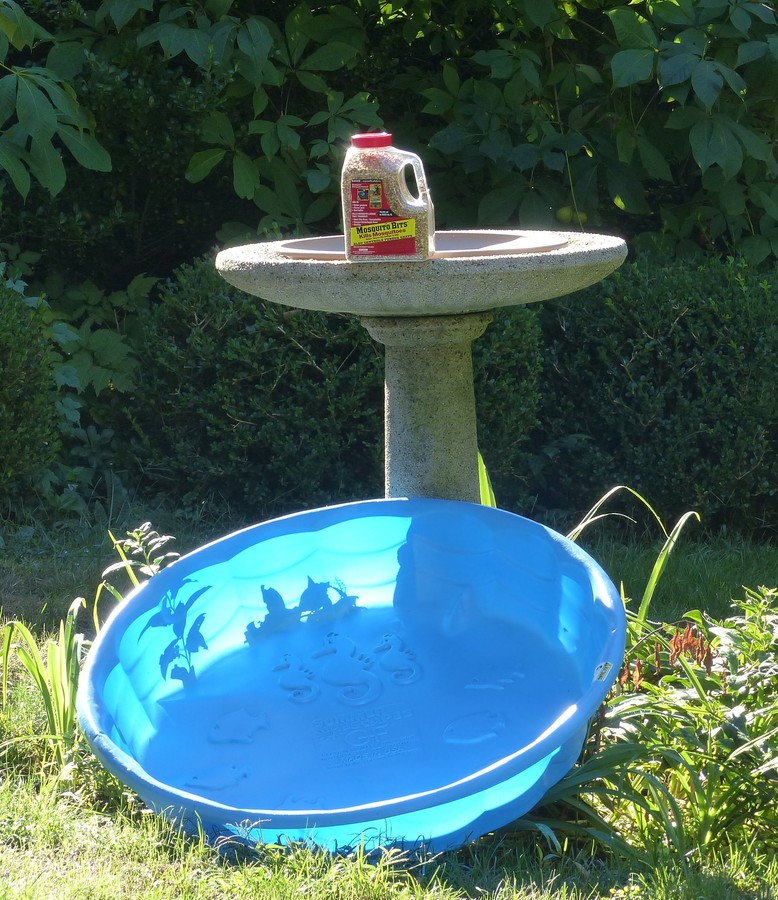A mystery at first, water plants became a delight
By early August, I begin to feel the slide towards fall. The weather is hot, there is not enough rain and the plants look exhausted. With the advent of September, I start cleaning up some of the paraphernalia that will not be needed until next summer.
There I was scrubbing out a child’s wading pool. Since everyone in the family has outgrown wading pools, it’s a fair question why it has not been given away. But like other “stuff” squirreled away, I finally had use for it.
As birders will tell you, having drinking water available is essential for any garden catering to wildlife and should be planned for when designing such a garden.
The mere fact that I find cats — who prey on songbirds and who I would like to dissuade from visiting my garden — also drinking the water is a problem I have not solved yet.
Said drinking water poses another problem. Mosquitoes breed in standing water and now everyone is rightfully concerned with West Nile and possibly Zika virus.
‘Mosquito Bits’
In years past, although I never measured how long it took mosquito larvae to hatch, I have seen wrigglers swimming in such basins. At least that problem can be solved by sprinkling “Mosquito Bits” onto any watery surface in the garden.
The “Bits” contain BTI which stands for Bacillus thuringiensis israelensis. The original formulation of Bacillus thuringiensis was used as an environmentally safe pesticide against caterpillars. However the subspecies israelensis — used by the “Bits” was discovered in dead mosquito larvae in Israel in 1976 by two scientists, Goldberg and Margalit.
It is effective against the larvae of mosquitoes, blackfly and fungus gnats. BTI is completely safe around all other organisms including people and their pets since it acts solely on the intestines of the larvae. Learning about the susceptibility of fungus gnats to BTI is particularly important to me since I managed to bring home a while back, a plant apparently growing in infested soil and have been trying to get rid of those gnats ever since. I have been using the “Bits” for standing water but I will shortly sprinkle them around all my houseplants.
When we moved into our home, there was a small reflecting pool in the backyard. With young children in the family then, the first thing I did was fill it in to prevent any possibility of watery accidents. However — like many of you — water plants enchant me.
Water lily discovery
When I was wandering around at Home Depot this spring, I came upon a boxed water lily that was calling out to me. I did not have any clear idea exactly how I would grow it, but I figured once I had it home the rest would flow naturally and I brought it home.
However, you cannot keep a plant indefinitely in a box. That’s when I suddenly remembered that wading pool that “I’m sure could be put to some use.” I put it outside and filled it about 5 inches deep and opened the container.
There was a small, dark rough-looking root in a net bag. Since there were no instructions included with the root, I simply dropped it into the pool and figured nature would take care of things. Next morning I went outside wanting to see if anything was happening and found the root on the ground, outside the pool.
I returned it to the water and next morning found it on the ground again. Clearly I had to protect it from whatever animals or birds were visiting the pool at night.
I brought the root indoors, put it in the largest glass vase I could find that I filled with water. Over the next few days, I saw roots developing and small leaves pushing upward on elongating stems that unrolled into tiny lily pads.
Finally, when it outgrew its container, I returned it to the pool and waited. Occasionally, I would find the whole mass on the ground although there was no evidence of any animal nibbling on it.
No blooming way
I waited the whole summer and never saw a bloom. While I blame low light for all my growing problems it seems that I may have myself to blame.
Checking the web now for instructions I discovered that the root should have been potted in soil before being sunk into the pool. Clear instructions can be found at
http://www.bhg.com/gardening/landscaping-projects/water-gardens/growing-water-lilies/#page=0.
The best part about finding out that you have made a serious gardening error, is having the opportunity of trying again and maybe this time, I’ll have the fabulous blooms I’ve been looking for.






